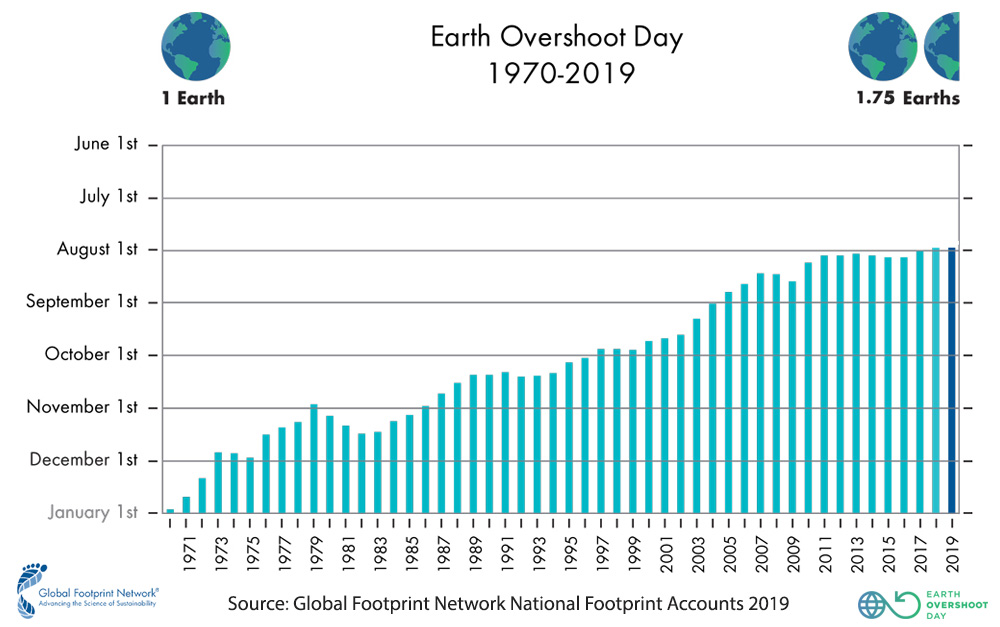Global Footprinting – Do we know what our Impact REALLY is?
Where does milk come from?
A few years ago, I was working with some children in a school in Hillbrow, Johannesburg and we were discussing environment and conservation and I detected a degree of scepticism from the youngsters. I decided to test this so I asked one 15-year-old, “Where does milk come from?” His reply was quick and clear. “From the café, of course.”
Why should I conserve?
This reply illustrates a common trait that people do not appreciate where the goods and services that they rely upon for survival come from, or the amount of energy, effort and natural resources that are needed to produce them. This means that there is no incentive to conserve those resources and prevent wastage.
“The world has enough for everyone’s need, but not enough for everyone’s greed.” Mahatma Ghandi
Human Consumption versus Ecological Recovery
We rely upon the earth to provide us with the means to live through use of air, water, food and energy. Human beings have grown in numbers to such a degree that the increasing demand to feed, house, clothe and occupy all of those people has put enormous pressure upon the earth’s ecosystems. One man and an organisation, Mathis Wackernagel and Global Footprint Network, set out to quantify the effects of humankind on global ecosystems in an effort to understand how human consumption was affecting those systems.
Ecological Footprint
The impact of human activities measured in terms of the area of biologically productive land and water required to produce the goods consumed and to assimilate the wastes generated.
Mathis Wackernagel and Global Footprint Network developed a system called “ecological footprinting” to measure the impact of the human “footprint” upon the earth. Using available data and eventually influencing the development of additional indicators and data sets, they were able to develop systems to measure, globally and nationally, human ecological footprints. This developed as a kind of ecological accounting, rather like financial accounting. They also looked at the resilience of ecosystems and their ability to “recover” from use of ecosystems resources. Financial systems talk about financial deficits, ecological systems experience ecological deficits. They very quickly realised that humankind was using global ecological resources faster than the global ecosystems could replace them (“unsustainable consumption”).
“…Annual income twenty pounds, annual expenditure nineteen [pounds] nineteen [shillings] and six [pence], result happiness. Annual income twenty pounds, annual expenditure twenty pounds ought and six, result misery…”
Mr Micawber in Charles Dickens’ “David Copperfield”
Earth Overshoot Day
This was then translated into the concept of “Earth Overshoot Day” or when does the earth start using more resources in the year than global ecosystems could restore or replace. The 2019 Global Overshoot Day, or when we began to start using our “Ecological Overdraft”, was 29th July. This translates into the statistic that the earth is using 1.75 earths every year, as per 2019 calculations and measurements. South Africa’s Overshoot Day this year was the 8 July. The table below shows how over successive years since 1971, the date of Global Overshoot Day has moved.
With acknowledgment to Global Footprint Network:

Personal Ecological Footprint
The Global Footprint Network has honed its tools to the point where they can provide a means for people to calculate their own personal ecological footprint and overshoot day at https://www.footprintcalculator.org/. They have also made freely available, the National Footprint and Biocapacity Accounts 2019 Public Data Package at https://www.footprintnetwork.org/licenses/public-data-package-free/
How much Nature do we have?
In a TED Talk (https://www.youtube.com/watch?v=3M29BY86bP4 ), Mathis Wackernagel said the following, “…while in 1961, the Earth’s biocapacity was higher than the resources demanded by human population, now 85% of the population live in countries that use more resources than their ecosystems can renew. In fact, there is an overarching trend. It’s true, Earth biocapacity has increased by 25% over the last 50 years. But our Ecological Footprint has grown even more (2-and-half-fold). The result is that now we use 60% (using 2016 data, this is now 75%) more resources than our planet can offer us…”
Arend Hoogervorst is an environmental scientist with some 35 years of experience in South Africa in environmental management and sustainable development in local and central government, commerce and industry and private practice.
© Arend Hoogervorst, 2019


